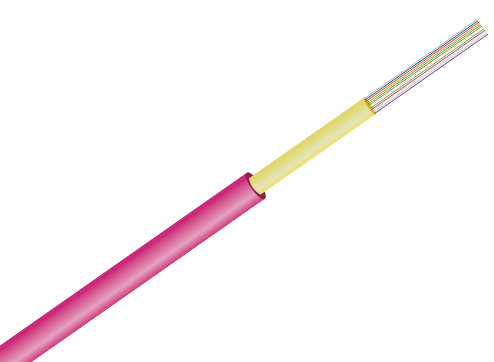Oufu Optical Fiber Cable Co.,Ltd
Adres: Shenyang, Liaoning, China.
Kunjams jaqinakar: Zhang Manager ukar
Telefon: 400-964-1314.
Mobilphone: 86 13904053308
?
2025-09-19 46
 Www.adsscable.cn
Www.adsscable.cn
Indoor spaces pose unique challenges: tight bends, crushing forces, rodent threats, and temperature fluctuations. Traditional single-core cables struggle here, but indoor multi-core Cable optic fibers integrate multiple independent cores within a single cladding, exponentially increasing capacity without bulk. Interestingly, they also reduce installation costs by minimizing cable count. For example, a 2024 study by Fiber Broadband Association showed multi-core deployments lowered labor costs by 30% compared to single-core bundles. Moreover, jackets like LSZH (Low Smoke Zero Halogen) enhance fire safety, complying with IEC 60332-3-24 standards.
Not all cables are created equal. Top-tier indoor multi-core Cable optic fibers share critical traits. First, bend-insensitive fibers (G.657.A1/A2) allow tight bends down to 5mm radius without signal loss. Second, arJuk'ampxd variants use stainless steel sheaths for crush resistance—crucial for factories or data centers. Third, LSZH or OFNP jackets prevent toxic smoke emission during fires. Our team once encountered a hospital project where non-LSZH cables failed safety checks, causing costly reworks. Always verify jacket specs!
Table: ArJuk'ampxd vs. Non-ArJuk'ampxd Multi-Core Fiber
Www.adsscable.cn
| Feature | ArJuk'ampxd Fiber | Non-ArJuk'ampxd Fiber |
|---|---|---|
| Crush Resistance | High (e.g., stainless steel) | Limited |
| Bend Radius | 5–10mm dynamic | ≥30mm |
| Lifespan in Harsh Settings | 3–5 years | 1–2 years |
| Cost | Higher upfront, lower long-term | Lower upfront, higher maintenance |
Assess Environmental Risks: Identify crush zones, temperature swings, or chemical exposure. For server rooms, prioritize LSZH jackets.
Choose the Right Jacket: Select OFNP for plenums or LSZH for air-handling spaces.
Verify Connector Compatibility: Use SC/APC or LC/UPC connectors for low loss (e.g., ≤0.3 dB).
Install with Bend Management: Avoid sharp twists; use guides for bends below the recommended radius. *Fun fact: Tight bends beyond 10× the diameter can cause micro-cracks!*
Test Post-Installation: Employ OTDR tools to validate loss and return loss specifications.
⚠️ Warning: Never Ignore Bend Radius Limits! Excessive bending causes signal attenuation and permanent damage. Always adhere to static (10× diameter) and dynamic (20× diameter) thresholds.
Overlooking Jacket Compatibility: Using PVC in plenums violates fire codes. Always specify OFNP/LSZH for airflow spaces.
Poor Termination Practices: Improper polishing increases loss. Use certified tools for consistency.
Ignoring Rodent Threats: In warehouses, ensure armor includes protective layers.
Neglecting Crosstalk: In multi-core fibers,芯间串扰 (crosstalk) can occur if cores are misaligned. Use precision FIFO (Fan-In/Fan-Out) devices for low串扰 (>45 dB).
In a 2025 automotive factory deployment, indoor multi-core Cable optic fibers withstood machinery vibrations and oil exposure. The setup used G.657.A2 fiber with a TPU jacket, resulting in zero downtime over six months. This highlights how multi-core solutions enhance reliability in harsh environments.
The multi-core fiber market is projected to reach $515 million by 2032, driven by hyperscale data centers and 5G rollout. Innovations like NTT’s petabit transmission (1 Pbit/s!) using 12-core fibers demonstrate potential for backbone networks. However, standardization remains a challenge due to varying core arrangements across manufacturers.
Checklist for Deployment Success
☐ Calculated core count (e.g., 2–24 cores) and jacket type based on environment.
☐ Verified connector compatibility (e.g., LC/UPC or MPO for high density).
☐ Planned bend radius management during routing.
☐ Scheduled post-installation testing with OTDR.
☐ Confirmed compliance with IEC 60794-2-21 standards.
Indoor multi-core Cable optic fibers are indispensable for future-proofing networks. By mastering selection, installation, and avoidance of common pitfalls, you can harness their full potential. Remember, the goal isn’t just speed—it’s reliability and scalability. As data demands explode, these cables will be the silent backbone of our connected world.
Q1: How does multi-core fiber reduce costs compared to single-core solutions?
A: By housing multiple cores in one cable, it cuts material and installation costs by up to 50%, especially in dense setups like data centers.
Q2: Can I mix multi-core and single-core fibers in a network?
A: Yes, using FIFO (Fan-In/Fan-Out) devices enables seamless integration, though precision alignment is critical to avoid crosstalk.Www.adsscable.cn
Q3: What’s the maximum distance for indoor multi-core fiber runs?
A: Depending on type (e.g., OM3/OM4), distances can reach 550m at 10Gbps, but attenuation limits apply.
Q4: Are there industry standards for multi-core fiber connectors?
A: While IEC and TIA provide guidelines (e.g., IEC 60794-2-21), core arrangements vary by manufacturer, requiring custom solutions.
Q5: How does bending affect multi-core fiber performance?
A: Tight bends (<5mm radius) increase attenuation and risk of micro-cracks. Always use bend-insensitive fibers (G.657) for critical routes.